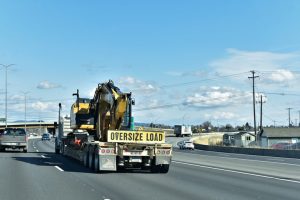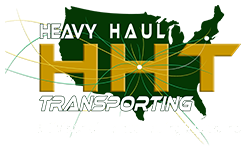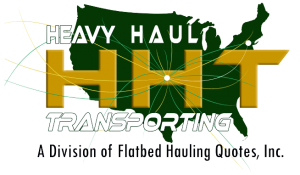Understanding Oversized Load Hauling Regulations: What You Need to Know
 Oversized Load Hauling, Oversized Load Hauler, Heavy Equipment Hauler, Transporting oversized loads
Oversized Load Hauling, Oversized Load Hauler, Heavy Equipment Hauler, Transporting oversized loads
Transporting oversized loads is a critical aspect of many industries, from construction to agriculture. However, navigating the regulations surrounding oversized load hauling can be complex. At Heavy Haul Transporting, we specialize in serving clients as a trusted oversized load hauler, ensuring that your heavy equipment is transported safely and in compliance with all legal requirements. Understanding the regulations is essential for anyone involved in oversized load transport. Here’s what you need to know.
1. Definition of Oversized Loads
An oversized load is typically defined as a vehicle or cargo that exceeds the standard dimensions set by state and federal regulations. While these dimensions can vary, loads generally considered oversized may exceed:
- Width: 8.5 feet
- Height: 13.5 feet
- Length: 40 feet for a single vehicle or 65 feet for a combination vehicle
- Weight: 80,000 pounds without special permits
When planning a transport, it’s essential to assess whether your cargo falls into this category. Heavy Haul Transporting has the expertise to evaluate your load and determine the necessary steps.
2. Permitting Requirements
One of the first steps in oversized load hauling is obtaining the appropriate permits. Each state has its own regulations regarding oversized loads, and permits are often required for any transport that exceeds standard dimensions or weight limits.
- Single Trip Permits: These are issued for one-time transports of oversized loads.
- Annual Permits: For companies that frequently transport oversized loads, annual permits can simplify the process.
Heavy Haul Transporting assists in obtaining these permits, ensuring that all necessary paperwork is handled efficiently to prevent delays.
3. Route Planning
Route planning is a crucial aspect of oversized load transport. Certain roads, bridges, and tunnels may have restrictions or require special accommodations for oversized loads. Additionally, some routes may need to be altered to avoid low overpasses or narrow bridges.
Working with an experienced oversized load hauler can make this process smoother. At Heavy Haul Transporting, our logistics team is skilled in route analysis, ensuring that your load is transported safely and efficiently.
4. Safety Regulations
Safety is paramount when transporting oversized loads. Various regulations are in place to minimize risks on the road:
- Flagging and Signage: Oversized loads often require escorts and special signage to alert other drivers. This can include “Wide Load” banners and flashing lights.
- Safety Equipment: The use of safety chains, straps, and other securing devices is essential to prevent shifting during transit.
Heavy Haul Transporting takes safety seriously. Our team is trained in best practices and equipped with the necessary tools to ensure that your load is secure throughout the journey.
5. Escort Vehicles
For particularly large or heavy loads, escort vehicles may be required. These vehicles help guide the oversized load and ensure that it is transported safely.
- Pilot Cars: Often used for wide loads, pilot cars travel in front of or behind the oversized load to help navigate obstacles and alert other drivers.
- Law Enforcement Escorts: In some cases, law enforcement may be required to escort oversized loads, especially when traveling through congested or urban areas.
At Heavy Haul Transporting, we coordinate all necessary escort services to ensure compliance with regulations and enhance safety.
6. Weight Restrictions and Bridge Laws
Each state has specific weight restrictions that must be adhered to during transport. Additionally, bridge laws dictate how weight is distributed across axles to prevent damage to roadways and bridges.
Understanding these laws is crucial for any heavy equipment hauler. Heavy Haul Transporting is well-versed in state and federal weight regulations, ensuring that your load remains within legal limits.
7. Insurance Requirements
Transporting oversized loads often requires specialized insurance coverage. Standard auto insurance may not be sufficient to cover potential damages or liabilities associated with oversized transport.
Before proceeding with your transport, make sure that your oversized load hauler has the appropriate insurance to protect both your equipment and other road users. Heavy Haul Transporting carries comprehensive insurance to safeguard your assets throughout the hauling process.
8. Communication with Local Authorities
Before transporting an oversized load, it’s essential to communicate with local authorities. This includes notifying law enforcement, local transportation departments, and any relevant agencies about your planned route and load specifications.
Good communication can help facilitate a smoother transport process and ensure that all regulations are met. Heavy Haul Transporting maintains strong relationships with local authorities and can assist in these communications on your behalf.
Conclusion
Understanding the regulations surrounding oversized load hauling is vital for successful transport. From permitting and route planning to safety measures and communication with local authorities, each step plays a critical role in ensuring compliance and safety. At Heavy Haul Transporting, we are dedicated to providing exceptional service as your trusted oversized load hauler. Our experienced team is ready to navigate the complexities of heavy equipment transport, ensuring that your oversized loads are delivered safely and efficiently. Contact us today to learn more about our services and how we can assist you with your oversized load hauling needs.

